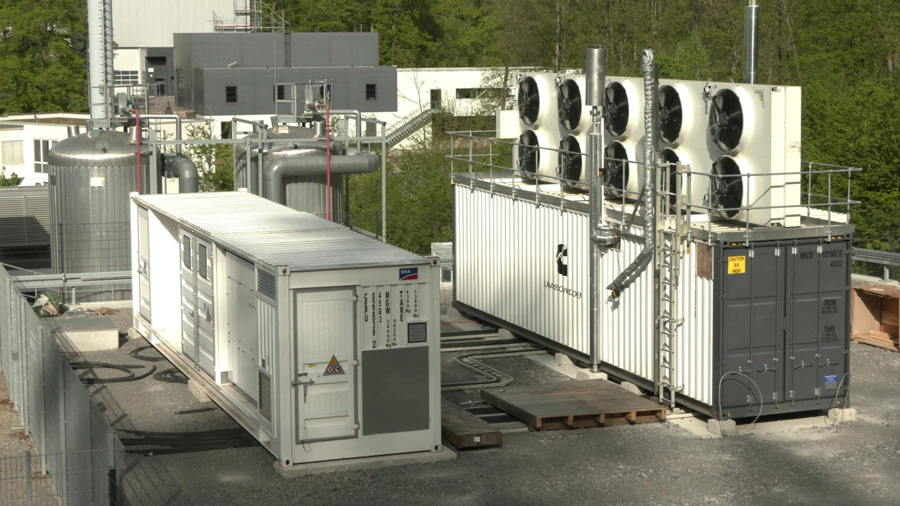Send this article to a friend:
December
17
2024
Send this article to a friend: December |
New retrofit lets micro-turbines burn both hydrogen and natural gas
As we aim to decarbonize energy production, green hydrogen has been suggested as a possible climate-friendly alternative to burning natural gas. Of course, we don't have a green hydrogen economy to support such things at present, and it might be years before that happens, if it happens at all. But even then, building brand new power plants is a very expensive undertaking. According to Peter Kutne, Head of the Gas Turbines Department at the DLR Institute of Combustion Technology – which is investigating how hydrogen can be used in gas turbines so that they operate with much lower emissions – "building a new 15-megawatt gas turbine power plant takes approximately six years and costs around 30 million euros (US$31 million). On the other hand, retrofitting an existing plant takes only one and a half years and costs around a tenth of that."  Retrofit pilot plant
DLR
With this in mind, DLR and PSC have demonstrated what's claimed to be the first commercially viable retrofit of a commercial gas micro-turbine that enables it runs on both hydrogen and natural gas, as a way to prepare for the day when green hydrogen becomes widely available. The Retrofit H2 project used micro-turbines with an output of about 100 KW, partly because of their better power-to-weight ratio. They're also widely used for producing power in remote areas, as well as for applications like backup power for hospitals: heating for hotels, swimming pools, and hotels. Additionally, micro-turbines of this output capacity can power places like breweries or waste treatment plants that can use their waste methane for fuel. The problem is that burning hydrogen in a natural gas turbine is like putting gasoline in a diesel engine. They're simply two different animals and the results are most unpleasant. Hydrogen burns much hotter than natural gas and has a much lower flash point, so it can easily wreck the combustion chamber of a micro-turbine with its heat and shockwave.  Schematic of reconfigured combustion chamber
DLR
To prevent this, the engineers developed a jet-stabilized burner optimized for hydrogen. Unlike the usual arrangement, the air and fuel injectors are set in a ring that generates a backflow in the chamber that pushes the exhaust gases back to mix with the new air/fuel mixture. This lowers the temperature, reduces nitrogen emissions, and stabilizes the flame. In addition, the new design allows the micro-turbine to burn hydrogen, natural gas, or a mixture of the two (until green hydrogen becomes more readily available) thanks to a new adjustable control system and safety technology. So far the system has been run in a pilot plant in Lampoldshausen on pure hydrogen for about 100 hours. "The high chemical reactivity of hydrogen is particularly challenging," DLR researcher Martina Hohloch said. "It has a flame speed around 10 times greater than natural gas and the ignition energy is lower by the same factor. This makes safe combustion difficult. When developing the burner, we had to ensure that the flame would not flash back into the burner nozzles and damage them." "We were eager to see how the turbine would perform with the new combustion chamber system outside the laboratory environment," continued Hohloch. "The tests have shown that we can start up with pure hydrogen without any problems and that the system achieves the full operating range from partial to full load. Our pilot plant delivered its full electrical 100-kilowatt output for several hours." Source: DLR
David Szondy is a playwright, author and journalist based in Seattle, Washington. A retired field archaeologist and university lecturer, he has a background in the history of science, technology, and medicine with a particular emphasis on aerospace, military, and cybernetic subjects. In addition, he is the author of four award-winning plays, a novel, reviews, and a plethora of scholarly works ranging from industrial archaeology to law. David has worked as a feature writer for many international magazines and has been a feature writer for New Atlas since 2011.
|
Send this article to a friend:
 |
 |
 |